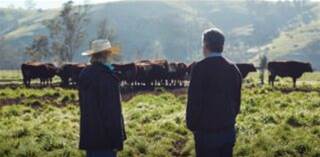NAB’s innovation arm has backed agricultural technology startup Geora which traces crop data using non-fungible tokens (NFTs) to create better lending outcomes for farmers.

Founded in 2019, the Geora platform uses permissioned Ethereum-based blockchain to gather information from farms and supply chains before collating the data in one place.
In its latest financing round, Geora raised $1.5 million towards creating financial solutions by building relationships with key banking partners and the blockchain ecosystem.
Tenacious Ventures lead the funding round with NAB Ventures and Flying Fox Ventures.
NAB Ventures executive Todd Forest said the bank “understand[s] the agricultural industry is a fundamental part of Australia’s economy”.
“Agribusiness customers have demonstrated they’re extremely innovative in their use of technology and we think Geora’s data capabilities will further help farmers and agri-supply chains prove their sustainability credentials,” Forest said.
“We look forward to further working with Geora, introducing the team to our customers, and looking at further opportunities to work together.”
Geora co-founder Bridie Ohlsson said its investors “understand the enormous opportunity” to service and innovate the farming sector.
“While agri-supply chains have been heralded as the killer application for blockchain since late 2017, the tech has, in many ways, failed to live up to its promises,” Ohlsson said.
“Blockchain solutions have been largely too technical and too expensive for those who really stand to benefit from them – potential users like the 570 million farmers globally who are critically responsible for being more sustainable across all parts of their operations.”
A Geora spokesperson declined to comment on the size of NAB's investment when asked by iTnews.
“Across our investor group we are really excited to have strong commitment and buy-in from both the agtech space and agri-finance world,” the spokesperson said.
“Being Australia's largest agri-lender, NAB is very interested in this space and the opportunities real-time on-farm data presents for the economics of supply chains.”




.png&h=140&w=231&c=1&s=0) Tech in Gov 2024
Tech in Gov 2024
















